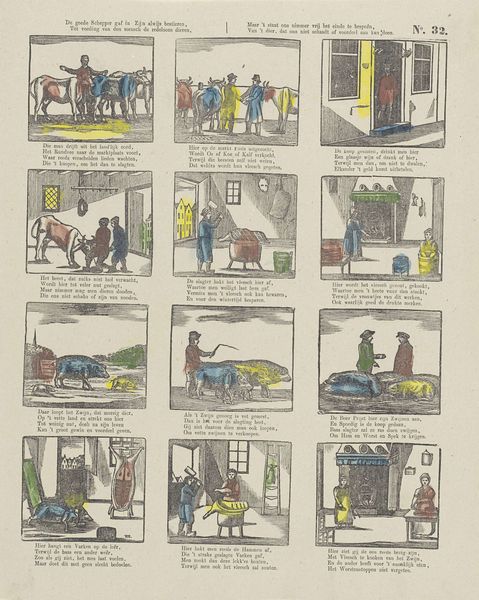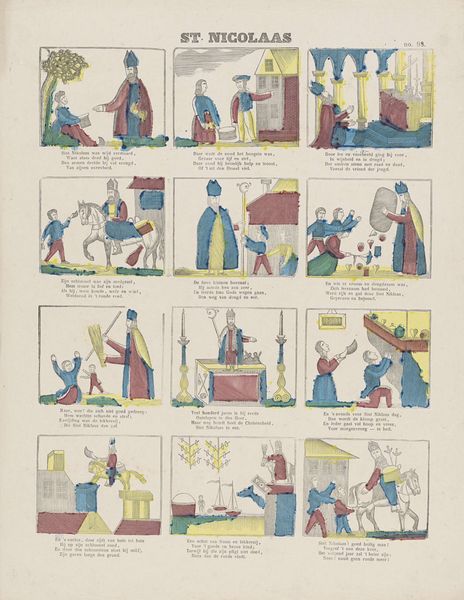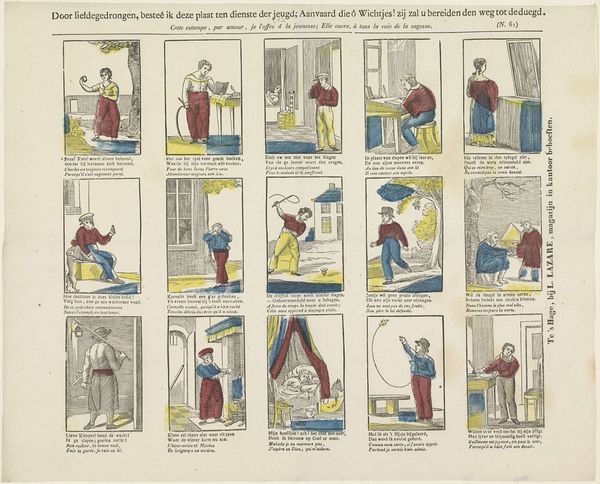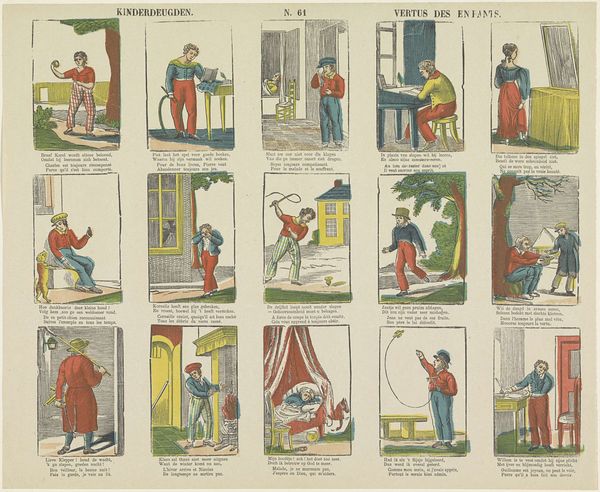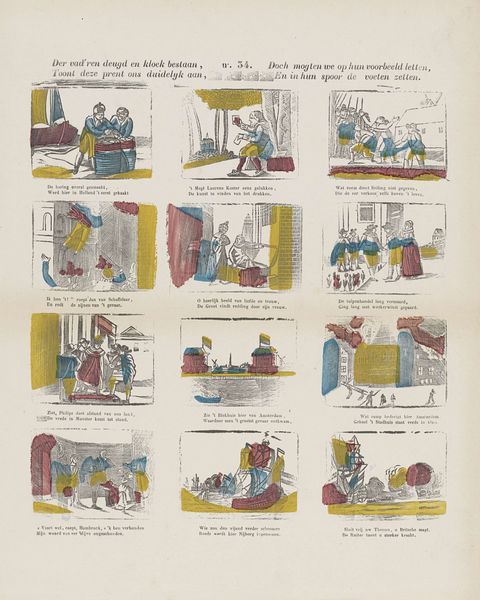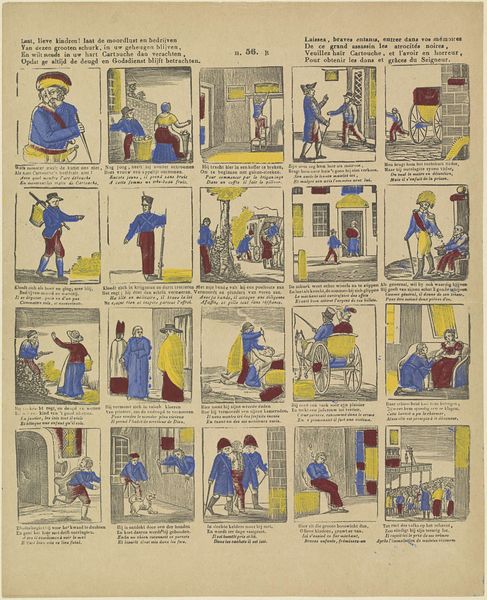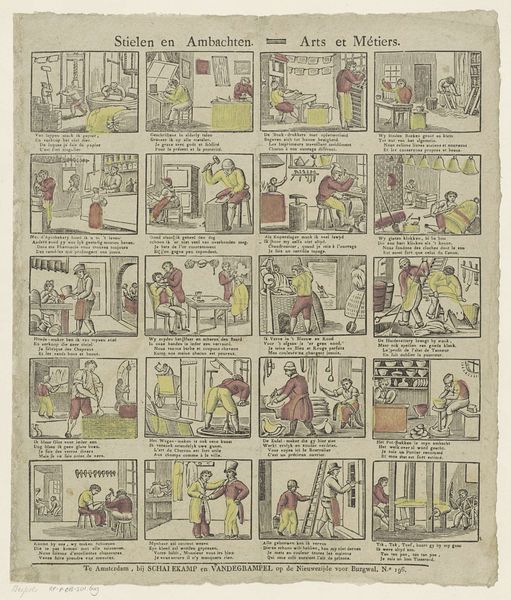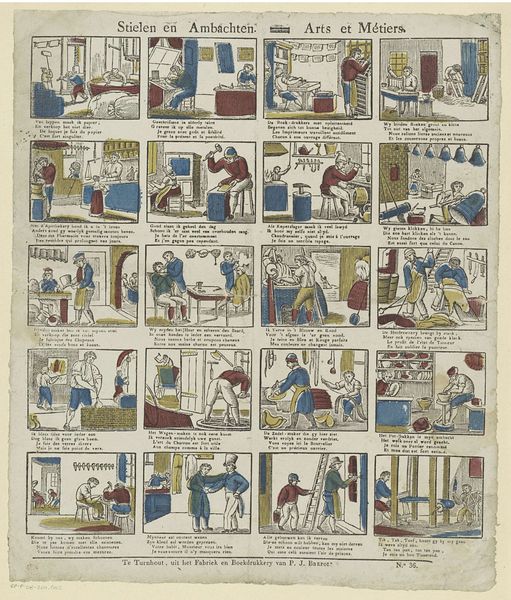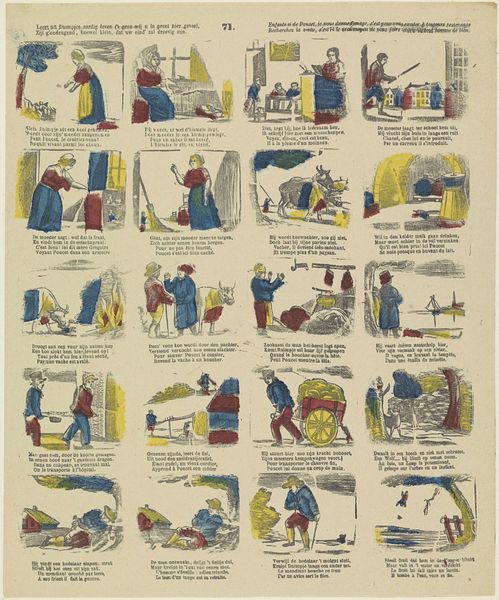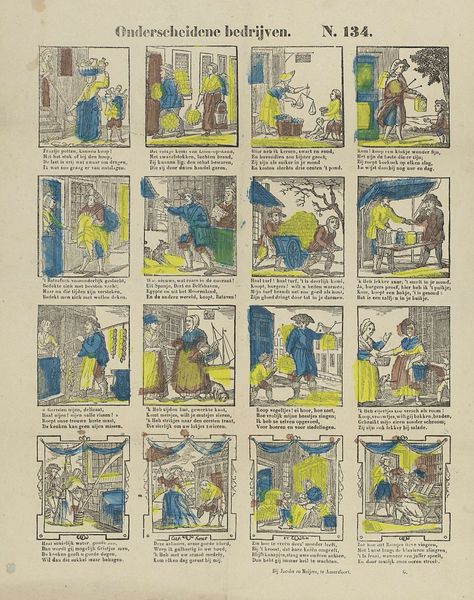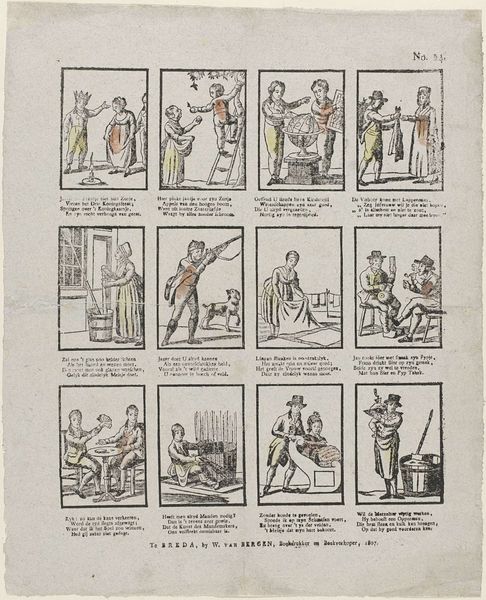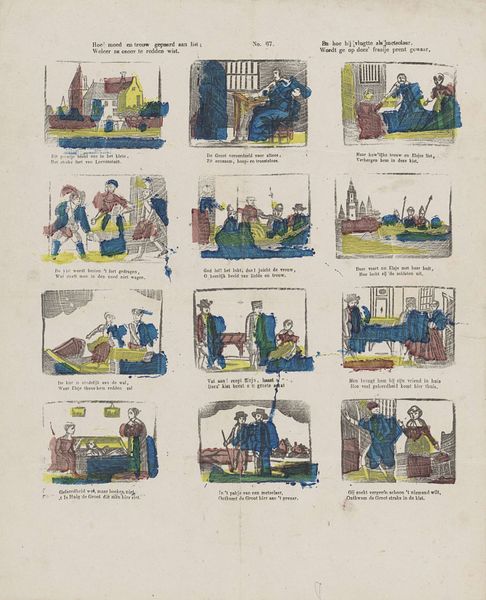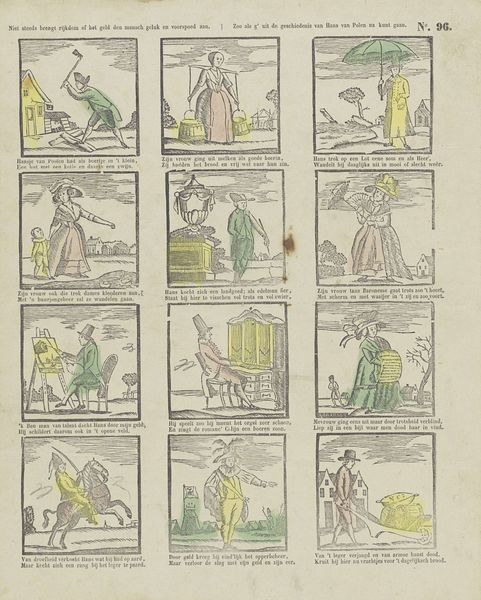
Als gij deez' lieve prentjes ziet / Herkent gij dan van Alphen niet. / Kent gij zijn lieve versjes nog? / Ik bid het u, onthoudt die toch 1848 - 1881
0:00
0:00
lutkiecranenburg
Rijksmuseum
#
comic strip sketch
#
aged paper
#
toned paper
#
quirky sketch
#
narrative-art
#
dutch-golden-age
# print
#
sketch book
#
personal sketchbook
#
sketchwork
#
comic
#
sketchbook drawing
#
genre-painting
#
storyboard and sketchbook work
#
sketchbook art
Dimensions: height 385 mm, width 314 mm
Copyright: Rijks Museum: Open Domain
Curator: Looking at this print from the Rijksmuseum, a piece entitled "Als gij deez' lieve prentjes ziet / Herkent gij dan van Alphen niet. / Kent gij zijn lieve versjes nog? / Ik bid het u, onthoudt die toch" made between 1848 and 1881 by Lutkie & Cranenburg, I'm immediately struck by its quaint, almost storyboard-like presentation. Editor: Yes, it has that visual grammar. My first impression is how the sequence gives a charming and somewhat antiquated feeling. The style, in its simplicity, makes it immediately accessible, recalling perhaps early comic strips or illustrations from children’s books. It really transports you to a different time. Curator: Agreed. Considering it comes from a sketchbook, likely a personal one, these panels evoke a domesticity, scenes of childhood and everyday life of that period. The use of illustrations combined with verse further enriches it; this combination allows viewers to grasp cultural values transmitted through education. What narratives do you glean here? Editor: The recurring figure in each frame—likely the same child or young boy—makes it fascinating to trace behavior patterns in his cultural environment. Seeing his world as presented here informs an understanding of expectations for children, even subtly. For example, there is a narrative panel where the protagonist is about to break something by whipping an object above his head. Is he simply engaging in some unruly activity? It opens an interesting window to nineteenth century society and notions of childhood development and character formation. Curator: Precisely. The simple verses beneath each panel aren’t merely descriptive. They offer moral instructions—explicit in some scenes, implied in others. I read these pairings to serve as cultural scripts, offering insights into moral codes while transmitting ideals of conduct suitable for emerging adulthood. What symbolisms resonate? Editor: The toned paper certainly enhances a sense of looking into past eras and evokes associated aesthetics. In that respect, the text within acts to create a fuller, chronological understanding that mirrors our present moment with some detachment: it shows the past yet insists that current beholders be able to recognize it. Curator: That’s an astute observation. It feels nostalgic and forward looking both simultaneously. Overall, there is an intricate play between visuals and written instructions, each panel inviting both emotional reflection, along with critical analysis within cultural study of this sketchbook illustration. Editor: Definitely, it makes one appreciate this gentle peek into history from an engaging angle!
Comments
No comments
Be the first to comment and join the conversation on the ultimate creative platform.
